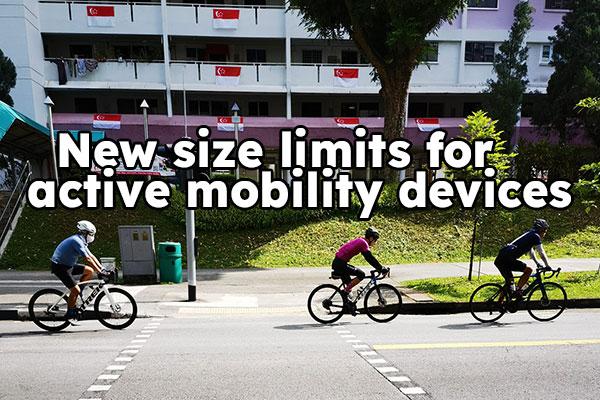Ideas and suggestions pour in for mobility devices
14 Mar 2015|1,886 views
Limit the top speed, teach users etiquette rather than regulate, and keep rules simple. These were among the suggestions from advocacy groups, users and MPs ahead of a government consultation on personal mobility devices which was announced earlier this week, reported The Straits Times.
Most motorised personalised mobility devices - including motorised kick scooters and electric unicycles - are banned on footpaths, roads, park connectors and in parks currently. Motorised wheelchairs are the exception. Meanwhile, it is not clear what the rules are for non-electric mobility devices such as kick scooters, but bicycles are allowed only on the road and park connectors.
As these devices become increasingly popular for short-distance commutes, the Government is looking into making such rules clear, and finding a balance between encouraging this alternative way of travelling and keeping all drivers and pedestrians happy.
Associate Professor Wong Yiik Diew, director of the Centre for Infrastructure Systems at Nanyang Technological University, said safety comes into play when there is a 'speed differential'. For example, safety concerns have been raised about cyclists, who travel at 15km/h, fighting for space with cars going at 50km/h.
On footpaths, the walking speed of a typical person may be about 5km/h, but motorised bicycles and electric kick scooters are five times as fast, at 25km/h. An electric unicycle, on the other hand, can go up to 16km/h.
Mr. Thomas Hoon, founder of The Wheelies, an electric unicycle interest group with 200 regular members, said if these devices were to be used alongside pedestrians on pavements, they will need to go slower. He added, "The speed should be as fast as someone sprinting, and will allow sufficient reaction time to prevent a collision." Mr. Hoon also agreed that users of these devices should learn to dismount and walk, wherever possible, especially when they are at zebra or pedestrian crossings.
Mr. Kenny Ng, 34, a bank executive and an electric kick scooter user, said certain places with high human traffic could be designated as no-go areas for such devices.
Limit the top speed, teach users etiquette rather than regulate, and keep rules simple. These were among the suggestions from advocacy groups, users and MPs ahead of a government consultation on personal mobility devices which was announced earlier this week, reported The Straits Times.
Most motorised personalised mobility devices - including motorised kick scooters and electric unicycles - are banned on footpaths, roads, park connectors and in parks currently. Motorised wheelchairs are the exception. Meanwhile, it is not clear what the rules are for non-electric mobility devices such as kick scooters, but bicycles are allowed only on the road and park connectors.
As these devices become increasingly popular for short-distance commutes, the Government is looking into making such rules clear, and finding a balance between encouraging this alternative way of travelling and keeping all drivers and pedestrians happy.
Associate Professor Wong Yiik Diew, director of the Centre for Infrastructure Systems at Nanyang Technological University, said safety comes into play when there is a 'speed differential'. For example, safety concerns have been raised about cyclists, who travel at 15km/h, fighting for space with cars going at 50km/h.
On footpaths, the walking speed of a typical person may be about 5km/h, but motorised bicycles and electric kick scooters are five times as fast, at 25km/h. An electric unicycle, on the other hand, can go up to 16km/h.
Mr. Thomas Hoon, founder of The Wheelies, an electric unicycle interest group with 200 regular members, said if these devices were to be used alongside pedestrians on pavements, they will need to go slower. He added, "The speed should be as fast as someone sprinting, and will allow sufficient reaction time to prevent a collision." Mr. Hoon also agreed that users of these devices should learn to dismount and walk, wherever possible, especially when they are at zebra or pedestrian crossings.
Mr. Kenny Ng, 34, a bank executive and an electric kick scooter user, said certain places with high human traffic could be designated as no-go areas for such devices.
Latest COE Prices
May 2025 | 2nd BIDDING
NEXT TENDER: 04 Jun 2025
CAT A$102,501
CAT B$116,988
CAT C$63,189
CAT E$118,010
View Full Results Thank You For Your Subscription.

















